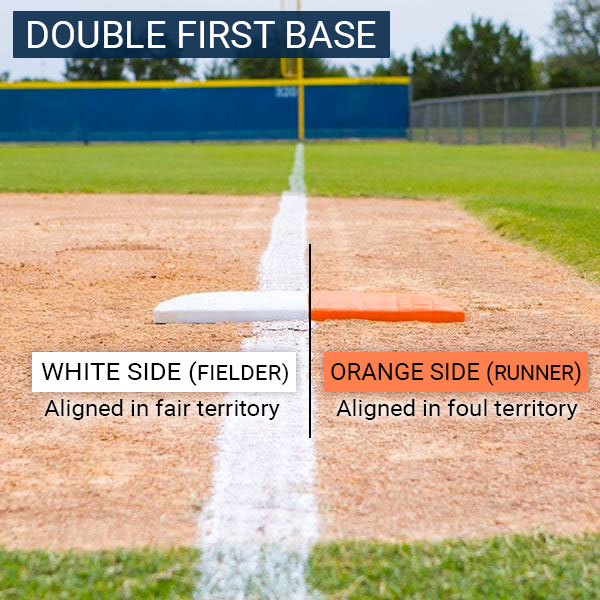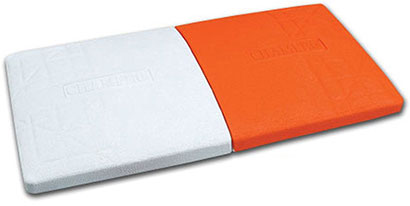
Double First Base Information Guide
As the move towards better player safety trends in sports, many youth baseball and softball leagues and adult softball associations have employed the use of the double first base, also referred to as a safety base, to reduce player injuries. The double first base is designed to significantly reduce collisions by providing separate bases for the fielder and the runner. The fielder uses the white base placed on the in-play side of the first base foul line, while the runner uses the orange base placed in foul territory.
High school and college associations have yet to make the double first base mandatory in baseball and softball play. However, calls to adopt the double first base in NCAA baseball and softball games have recently gained momentum. Below, we break down the current double first base rules in baseball and softball leagues and associations.
Current Double First Base League/Association Rules
- Youth Leagues & Adult Associations: Most youth baseball and softball leagues and adult softball associations do not require a double first base (its use is left to the league's/association’s discretion). USA Softball is currently the only association that requires a double first base for all levels of play.
- High School (NFHS): In NFHS baseball and softball play, the double first base is permitted at the discretion of each state association.
- College (NCAA): The NCAA does not require the use of a double first base in softball. However, it has introduced an experimental rule allowing its use. In baseball, double first bases are not mandatory, but starting with the 2025 season, the NCAA has approved their use in regular-season and postseason games across all divisions. An exception applies to the 2025 Division I postseason, where the NCAA mandates the use of double first bases during Regionals, Super Regionals, and the College World Series.
- Olympic Softball: A double first base is mandatory in Olympic softball play. The double first base has been used in Olympic softball since the first games in 1996.











